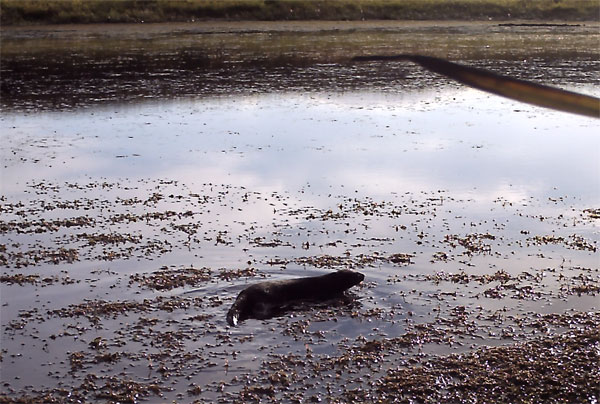For Immediate Release
Gifford, WA: In a communique received by the North American Animal Liberation Press Office today, Animal Liberationists have taken credit for liberating more than 1000 captive mink from a Washington ranch. According to the communique, early this morning activists entered Miller’s Mink Ranch, destroyed breeding information and opened three quarters of the cages. Images and a short video of several mink going free in a wilderness setting were included with the communique and will be available soon on the Press Office website.
Millers Mink Ranch, located at 2823 Addy Gifford Rd in Gifford, WA was established in 2001 and is incorporated in the state of Washington; current estimates show this company has an annual revenue of $94,000 and employs a staff of 1.
The communique received reads, in its entirety:
“In the early morning hours of October 12th, we entered Miller’s Mink Ranch on Addy-Gifford Road in Washington, and took down every breeder card in one of the two large, main sheds. We opened approximately 3/4 of the cages, many of which had more than one animal, freeing more than a thousand animals. We also took 3 individuals and released them at different locations.
We chose to do this not because we believe that humans wearing fur is inherently wrong. Rather we think that the callous disrespect with which the fur industry treats the animals is despicable. The fact that it has become and ‘industry’ for the vanity and fashion of the rich is what we hate. In the Pacific NW the fur industry represents more than just animal abuse and species-ism. Trapping, killing, and skinning fur bearing mammals for profit was one of the first steps of westward expansion and manifest destiny in this area. It was one of the first parts of the colonial process that decimated many Native people and cultures. The fact that the fashion and fur industries point to Native people wearing fur as their justification of the factories of death is inexcusable. These people responsible have no personal or cultural ties to the native people who were here first, in fact, they are a part of the system that destroyed their way of life. The current way of ‘farming’ mink, fox, bobcat, and lynx does not bear any similarity or have any hint of the same respect for life and nature that the native tribes and cultures around here have.
We are not asking for better conditions for farmed mink, for a more humane way of caging wild beings. Mink are fiercely territorial animals in the wild, with territories that can be miles long, usually along waterfronts where they can swim and hunt fish and small mammals. This freedom is their birthright as wild creatures. The approximately 2 square feet in which Miller’s Mink Ranch cages two and sometimes three mink for the whole of their lives is unspeakable. It is unfortunately the standard for mink farms the world over. The agony and frustration at never feeling more than wire under paws that were meant for swimming and pursuing prey can only be wondered at. Some mink’s fervor for freedom is so great they bite the wires of their cages until they break their teeth.
We would like to dedicate this act to every rebel warrior who died nameless and whose rage and bravery went unseen and unknown, to all who struggle against oppression, even with no light at the end of the tunnel in sight.”
Imprisoned in cages for life, fur-bearing animals killed to make products sold in stores like Rocky Mountain Firework & Fur Company are forced to endure intensive confinement, compared to the miles of territory these animals would enjoy in the wild – their natural state. The natural instincts of these captive animals are completely frustrated; self-mutilation, sickness, infection, poor sanitation and the sheer stress of confinement lead animals to premature death. When they survive, animals of sufficient size are killed by anal electrocution or gassing, then skinned. In addition to liberating the wild animals destined for a certain, painful and agonizing death, another goal of liberationists is to cause economic damage to fur retailers and farms; dozens of stores and fur farming operations have seen economic ruin since “Operation Bite Back” began by the Animal Liberation Front in the 1990s.
The unnamed clandestine group of animal liberationists join others who utilize economic sabotage in addition to the direct liberation of animals from conditions of abuse and imprisonment. By making it more expensive to trade in the lives of innocent, sentient beings, they maintain the atrocities against our brothers and sisters are likely to occur in smaller numbers; their goal is to abolish the exploitation, imprisonment, torture and killing of innocent, non-human animals.


